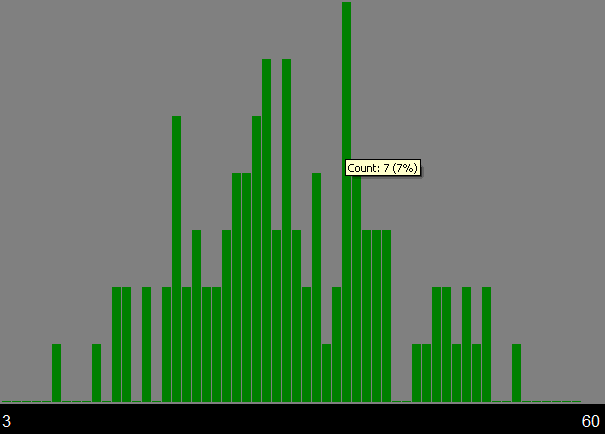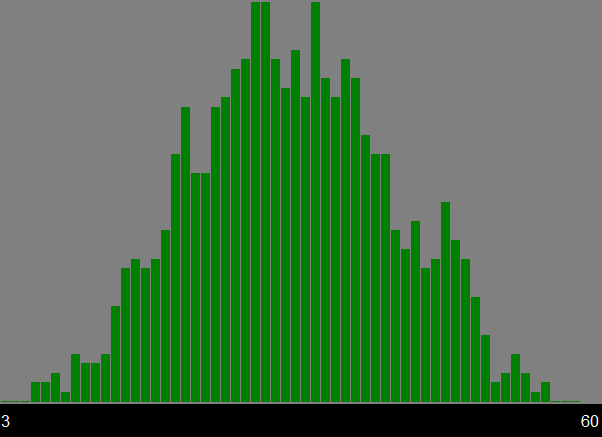The Central Limit Theorem tells us that in such cases, the distribution of such sums is normal. Even more interestingly, due to because of the reduction in Coefficient of Variation as more and more dice are summed, the normal distribution gets more and more "squeezed" in the middle as more and more dice are summed. This highlights the advantage that service providers have at increasing scale as addressed in Cloudonomics Laws 3 and 4 implies that service providers that aggregate more demand need fewer resources (the right side of the curve gets compressed towards the mean) and get higher utilization (the left side does the same thing).
Second, run any number of random trials, where each trial consists of "rolling" the dice, and including the sum in the histogram plot. You can run 1, 10, 100, or 1000 trials at the push of a button, and keeping the [ENTER] key on your keyboard depressed will repeatedly run that many trials. WARNING: Large numbers of trials with large numbers of dice may take a while, depending on the speed of your computing device. Or, use the "Calculate All" to determine the exact distribution. It only takes 8 six-sided dice to enable well over a million combinations, so random trials are more computationally efficient to assess the distribution that exhaustive combination. Keeping the [ENTER] key depressed enables a hundred thousand or more trials to be conducted fairly rapidly, and also shows the convergence of the distribution to a smooth curve, as shown below in a set of trials involving three twenty-sided dice.




